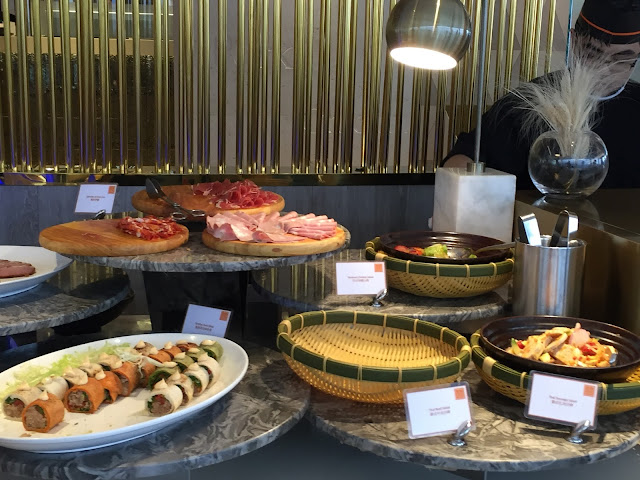 |
In case you can't read the above really well, then read below:History
Stanley -
has been one of the main areas of settlement throughout the island’s history. In 1841 when the British took possession there was already a fishing community numbering over 2,000 living here. The English name originates from Lord Stanley, a British Colonial Secretary in the 19th century. The Chinese name “Chek Chue” can be translated as red column, likely referring to the local red-flowered cotton tree “Bombax malabaricum”. Stanley - named after Lord Stanley, the British Secretary of State for the Colonies at the time of Hong Kong’s cession to Britain in 1841 - is one of the oldest villages on Hong Kong Island. Known in Chinese as “Chek Chue”, the village appeared in Chinese official records as early as in the Ming Dynasty (1573 - 1620). During the Qing Emperor Qianlong’s reign in 1767, Stanley villagers funded the building of the Tin Hau Temple which has since remained as the religious hub of the area, and formed a “Charity and Security Communal Hall” from which the present day Stanley Kaifong Association has evolved. When Hong Kong Island came under British rule in 1841, Stanley, with a population of some 2,000, was the most populous area on the island. It soon became a base for the British garrison, in the vicinity of which a military cemetery was built. As early as 1841, sites in the area were demarcated by the Government for sale. For centre on the northern shore of the island, coupled with constant threats from pirates, had hampered the village’s early development, in the mid-1930s, a series of batteries was erected on the southern shore of Hong Kong Island including Stanley to guard against attacks from the sea. In 1938, the Stanley Prison, the largest prison in Hong Kong, was built on the Stanley Peninsula. During the Japanese invasion in December 1941, the Japanese and the defending British Commonwealth troops had a fierce final encounter in Stanley which resulted in heavy casualties. Stanley Prison and the adjacent St. Stephen’s College were used as internment camps for government officers and foreign civilians in the years when Hong Kong was under Japanese occupation. Since the early 1970s, Stanley has gradually developed into a popular tourist destination. Shops and stalls offering a variety of apparel and accessories have sprung up in Stanley Market, while pubs and restaurants have clustered along the waterfront. In 1998, when reclamation and beautification works were carried out in Stanley, Murray House, one of Hong Kong’s oldest buildings originally located in Central District, was re-constructed in Stanley. In 2007, a new public pier was built at the waterfront outside Murray House. The new pier, named “Blake Pier at Stanley” and featuring the historic cast-iron roof truss removed from the decommissioned Blake Pier in Central District, resonates with nostalgia of a long past era. |
 |
We survived the bus ride and arrived in Stanley. It is famous for it's market which you see down the street.
|
 |
| We went with our friends, Elder and Sister Nielsen. Sister Nielsen and I [Carol] enjoyed checking out the little stores. In one of the stores, we had the cutest little ladies wait on us trying to sell their clothes. We had to buy something just because they were so cute. With Elder Nielsen's help, as he speaks good Cantonese, we were able to give them a pass-a-long card which has the Church's website , only in Cantonese, on it. You can click on the link above, if you're interested in seeing the English version. |
 |
| Two characters in front of Stanley Harbor. We had lunch here of fish and chips and spring rolls. |
 |
| There are many boats, container ships, and tankers going past the Harbor. |
 |
| The statue on the hill above Stanley is Kwan Yin,the goddess of mercy and the goddess who protected the fishermen. One of the giant homes right by it is owned by Kung Fu movie star, Jackie Chan. |
 |
| The butterflies love the wild orchids. |
Below is a video view from the bus but it isn't as exciting as it really was.
 |
| Returning back to Repulse Bay. We decided we want to live here but the apartment cost for our apartment would be around $6000 US per month. |
 |
| Or how about living here in this modest residential building? |
 |
| It was pouring rain as we came out of the tunnel on the Hong Kong City side. Traffic was very slow and this was Saturday afternoon. |
 |
| There's an old Catholic Cemetery along the highway right in the city. We don't know how they sleep peacefully here with all the traffic! |
 |
| A blurry statue of some dragon along the highway. |
 |
| Here's just more small residential buildings along the way back from Stanley. You can see why Hong Kong has the most tall buildings of any city in the world. |
 |
| Here is some of our "family" in our branch. We were assigned to lead them and have family home evening with them once a month. We had family home evening with them last week. Elder Chandler gave them this lesson from the Ensign, Father's Day message They are so very wonderful and so very sweet. If we are able to get them all together, we will have 29 new daughters! We wish there were more couples here so the families wouldn't have to be so large. |
 |
| We thought we would close with this beautiful evening photo of a view from our friend, Chloe's apartment, Panorama Gardens. |














































